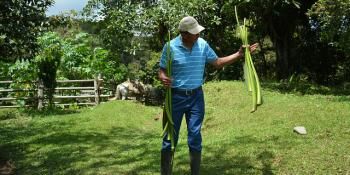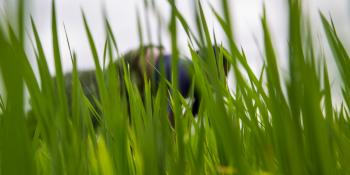Do men and women farmers cope differently with climate shocks?

To design inclusive policies and programmes that can help agriculture adapt to climate change, it is critical to understand what kind of choices people make when faced with climate shocks and if gender influences such decision-making.
It is estimated that in India with every degree rise in winter temperatures, wheat yields will decline by four to five tonnes. The relationship between climate change and agriculture is complex and while some regions may witness gains under a changing climate, the overall effect, particularly in South Asia, is negative. Over 60 percent of agriculture in the region is rain-fed and for crops such as maize, projections estimate a decrease by 50 percent in irrigated areas in coastal districts, and by 35 percent in rain-fed areas.
Behind these statistics are people’s lives. In the absence of alternative strategies, declining and uncertain yields mean less food security and incomes. For millions of farmers, this means having to make hard choices about how to cope with an increasingly untenable future.
A gendered approach
In order to understand the nexus between climate change and agriculture and how farming can become more resilient to extreme weather events such as heat-waves, droughts and floods, it is critical to understand how farmers typically respond to climate shocks and the power dynamics behind such decision-making within families.
However, treating farmers as a homogenous group does not elicit the right answers. Given that agriculture is a heavily gendered sector and men’s and women’s roles are strongly defined, can we also assume that they cope (that is, how they manage or minimize a stressful event) differently with the impacts of climate change?
Bihar case study
Under the CGIAR Research Program on Climate Change, Agriculture and Food Security in South Asia, socio-economic researchers from the International Maize and Wheat Improvement Centre (CIMMYT) looked at this question.
Download the paper: Farmers coping strategies for climate shock: Is it differentiated by gender?
The study focused on Vaishali district in Bihar state in India, which is a region prone to floods and droughts. The state has witnessed four droughts between 2009 and 2015. Bihar has mostly smallholder farmers and women make up 22 percent of the agriculture workforce. But with men migrating out of rural areas, the actual number of women taking up farm work can be much higher.
The researchers surveyed 641 households in Vaishali district and gathered information from the head of household, male or female. The survey also looked at whom within the household made a decision on the coping strategy to be employed and who actually carried out the actions related to it.
Some coping strategies include altering planting dates, adopting drought-resistant crop varieties, reducing expenditure on food or non-food items, taking on additional work outside the farm and migrating to find new jobs among several others.
While the literature suggests that over 80 percent of the decision-makers are male head of households, the dynamics of inter-household negotiations and bargaining power are more complex. There are several factors that influence who among the family makes decisions and who carries them out, based on their age, level of education, and access to resources such as credit and land.
Coping strategies
A multivariate probit model, which better captures the variety of coping strategies farmers usually employ, was used to assess how factors such as gender, age, farm size and access to extension services influence their response to climate shocks, which in this case were mainly floods or droughts.
the gender of the decision-maker does play a factor in selecting one or more coping strategies
The paper offers a more nuanced conclusion of the results, but the overall analyses suggest that the gender of the decision-maker does play a factor in selecting one or more coping strategies. It does often tend to be the male head of the household. However, when the impact of the climate shocks is so severe that it affects the entire family, such as, for instance, cutting down intake of food, decisions are taken jointly. It was found the most preferred coping strategy is to migrate to find new employment. However, exposure to training and extension services does influence farmers to seek out other coping strategies such as crop rotation, use of alternative seed varieties, and pest and disease management, among others. Female farmers have little access to extension services and therefore programs and policies aimed at helping families cope with climate change need to address this inequity.
Read more about CCAFS South Asia’s work on gender and climate change:
- Empowering women to take the lead on climate change adaptation
- For women farmers in Haryana, change starts with information
This blog was written by Dharini Parthasarathy, communications consultant, CCAFS, and Surabhi Mittal, senior researcher, at the International Maize and Wheat Improvement Centre (CIMMYT)



